A Colour A Day: Week 10
By Ruth Siddall, on 31 May 2020







 Close
Close

By Ruth Siddall, on 31 May 2020







By Ruth Siddall, on 17 May 2020
Jo Volley writes….
A COLOUR A DAY – Week 8; 11th – 17th May
This week’s colours are from the sea and to accompany them you can hear Janet Baker singing ‘Where Corals Lie’. The music is from Edward Elgar’s Sea Pictures, words by Richard Garnett.
The deeps have music soft and low
When winds awake the airy spry,
It lures me, lures me on to go
And see the land where corals lie.
The land, the land, where corals lie.


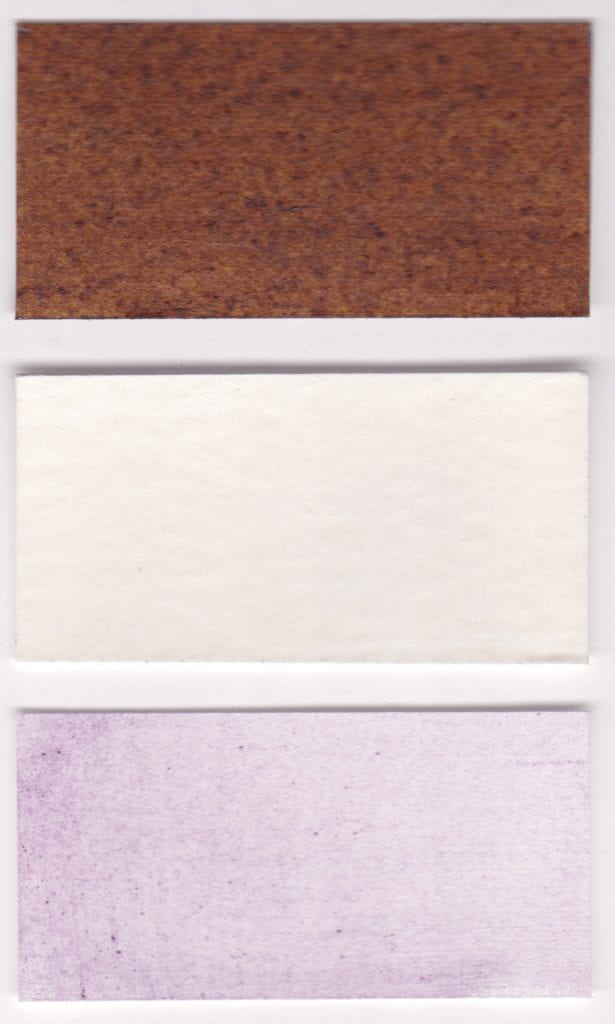




By Ruth Siddall, on 10 May 2020
A COLOUR A DAY – Week ; 4th – 10th May
Jo Volley writes……
This week’s colours are a homage to our key workers and are from Winsor & Newton’s Professional watercolour range.
The rainbow mirrors human aims and actions. Think, and more clearly wilt though grasp it, seeing Life is but light in many-hued reflection; Goethe Reflection,Thinking, Mirrors

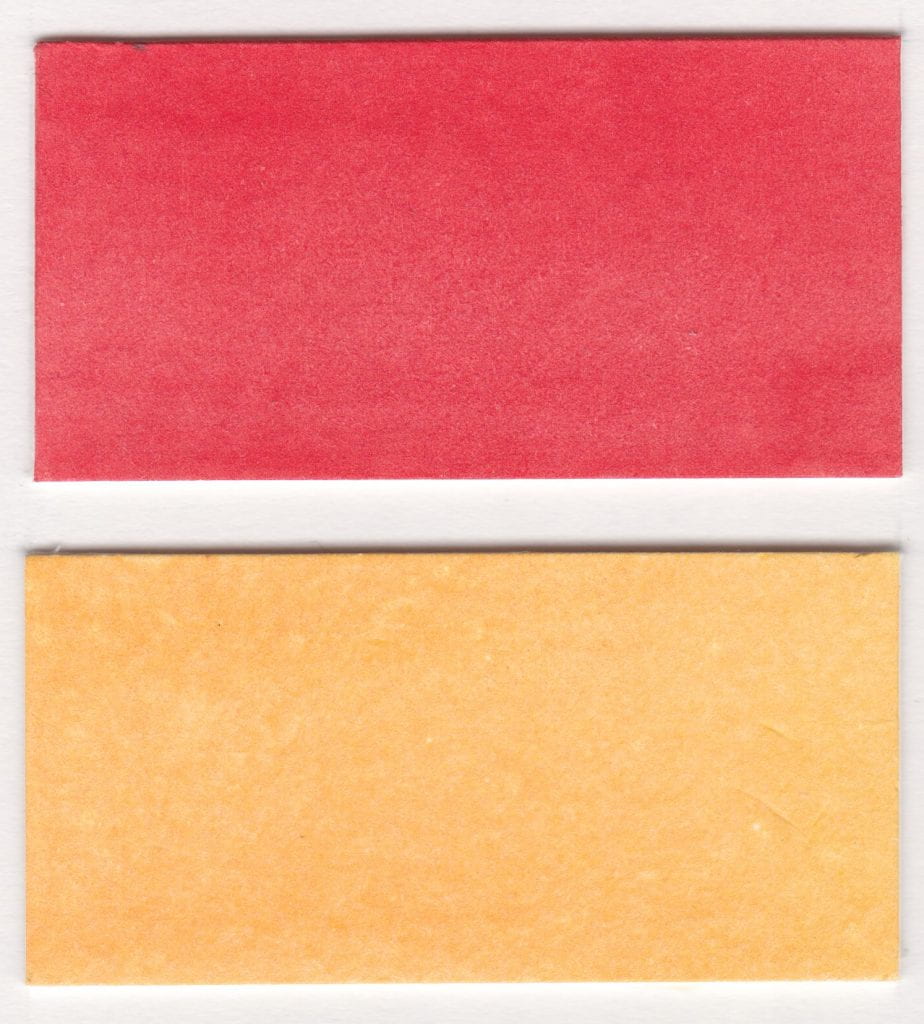

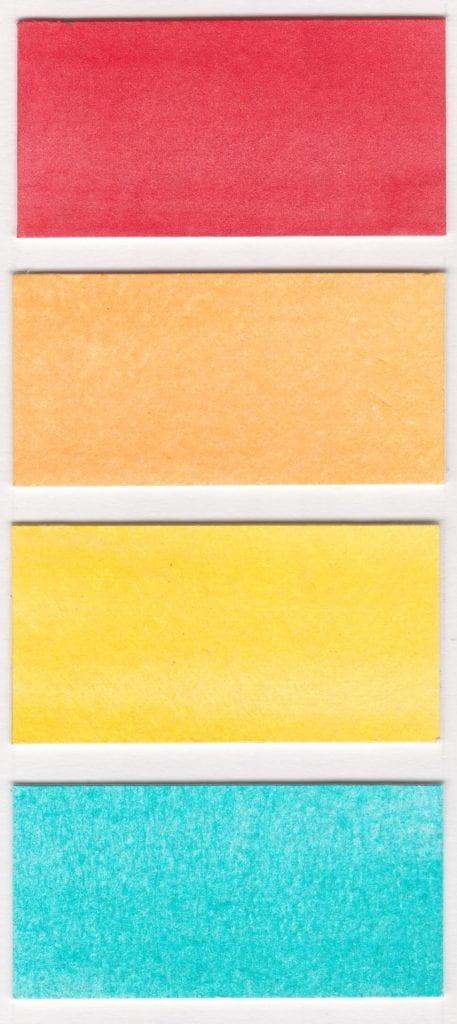



By Ruth Siddall, on 26 April 2020
Jo Volley writes….
A COLOUR A DAY – Week 5 –-20th -26th April are 7 historic blues bound in gum arabic.
‘We love to contemplate blue, not because it advances to us, but because it draws us after it.’ Goethe
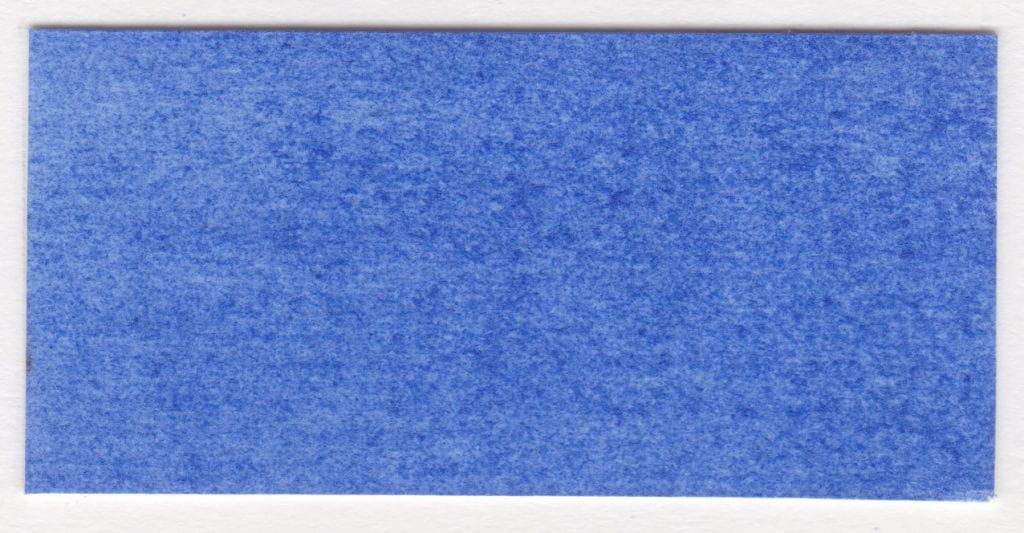


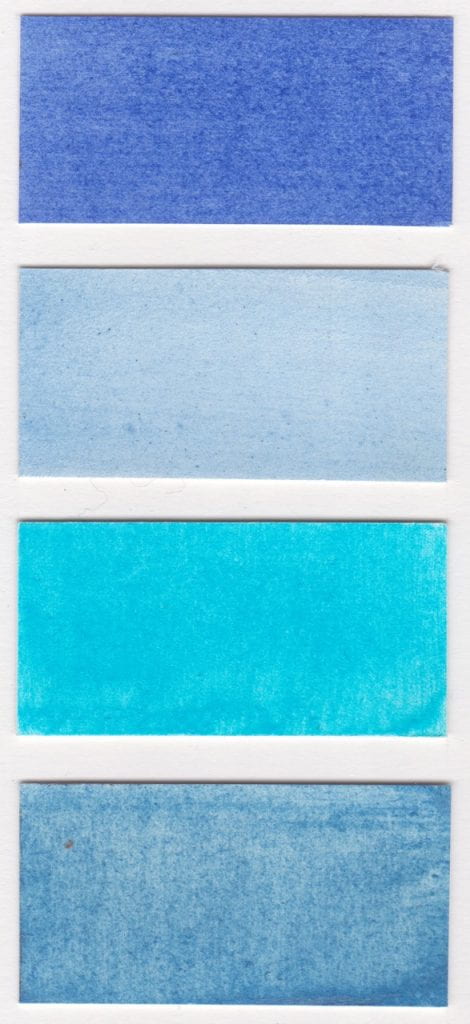
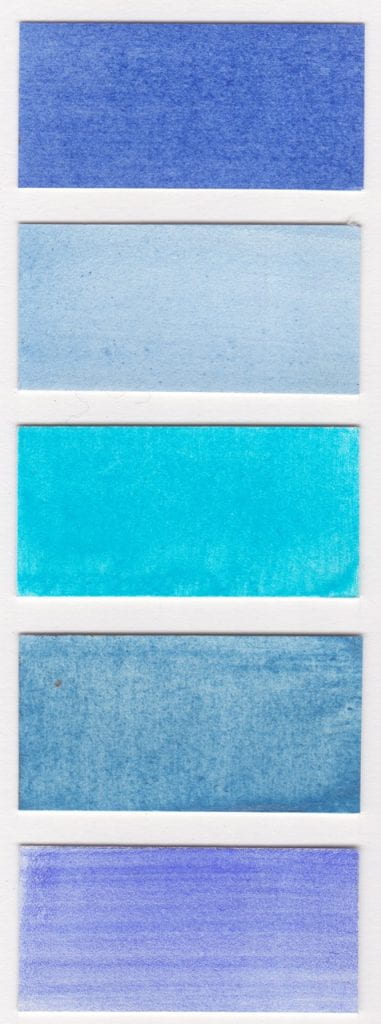


By Ruth Siddall, on 19 April 2020
A COLOUR A DAY – Week 4 – 13th -19th April
Jo Volley writes …
For Week 4, here are 7 green earth pigments from various locations from around the world.
‘I kept putting the same colour on – the same colour, the same colour – but every time I put it on it was different. Each time it was this whole new light/colour experience. It was not a revelation, but a whole wonderful new experience… To me, it involves harnessing some of the powers of the earth. Harnessing and communicating.’ Brice Marden on terre vert

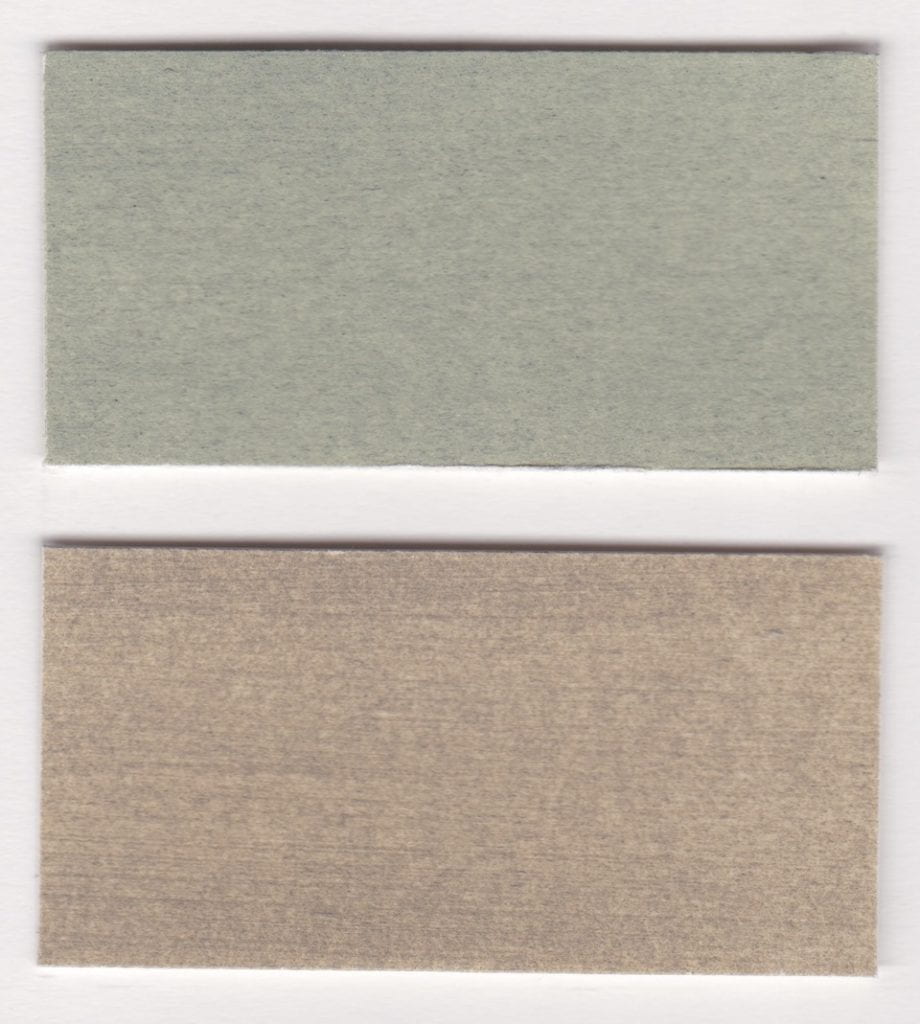





Jo Volley, 19 April 2020
By Ruth Siddall, on 12 April 2020
A COLOUR A DAY – Week 3; 6th – 12th April
Jo Volley writes …
These are iridescent colours from the Lefranc Bourgeois Flashe Vinyl Arylics collection.







Jo Volley, 12 April 2020
By Ruth Siddall, on 5 April 2020
A Colour A Day is a year-long project by Jo Volley, which began on the first World Pigment Day, 22 March 2020, to celebrate one colour each day by recording a swatch. This is the post of colours created for Week 2; 30th March – 5th April.
This week’s contributions are group of colours made from natural sources that Jo has collected and prepared as pigments.



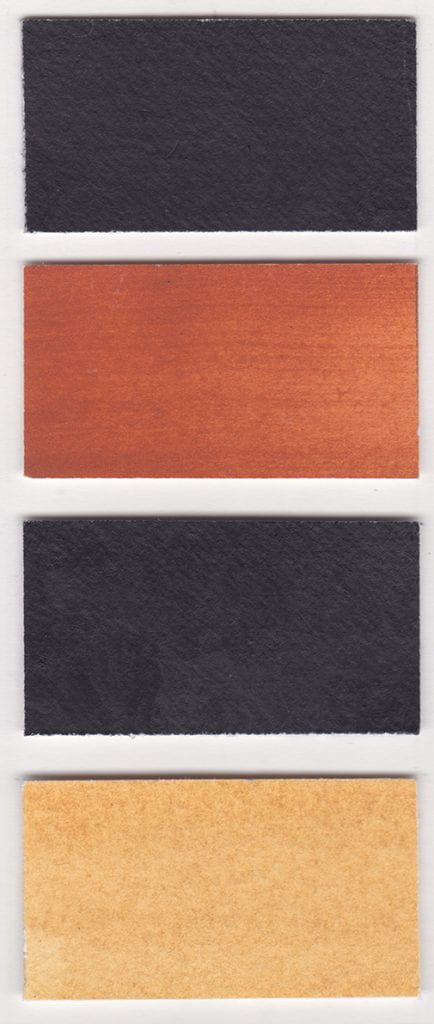



By Ruth Siddall, on 1 April 2020
It is fair to say that ochres and their origins are poorly discussed in the academic geological literature. Though ubiquitous in the landscape, they are largely ignored by most geologists. They occasionally pique the interest of economic geologists but are generally dismissed and shovelled away in favour of something more shiny. Ochres can form in a wide range of geological environments on Earth and indeed, on Mars (there’s a reason it’s red), but in this post I’m going to focus on ochre forming on the weathered surfaces of solidified basalt lava flows (I may get around to writing about other ochre-forming environments in the future). At its simplest, ochre is defined as an earthy deposit predominantly composed of metal-rich oxides or oxide-hydroxides. By far and away, iron ochres are the commonest, but ochres of other metallic elements such as cobalt, nickel, copper etc. can also form. Ochres form in the surface or near-surface environment, in the presence of oxygen and water. Iron ochre formation is accelerated by warmer Mediterranean or tropical climates, and the presence of red rocks is therefore often indicative of past warm climates in the rock record.

The inspiration for this post was a photo (above) posted on Instagram for World Pigment Day by Scott Sutton of an ochre layer between basalt lava flows in the Rio Grande Gorge of New Mexico. This region’s geology is dominated by basaltic volcanism which erupted in the upper Miocene, around 10 million years ago. These eruptions were not like any basaltic volcanism we can observe from active volcanoes anywhere on Earth today. They were large-scale, effusive flows which spread out covering large areas and forming a plateau composed of a thick pile of solidified lava. Such formations are subsequently known as plateau basalts or (continental) flood basalts. The basalts of the Rio Grande Gorge are part of the Taos Plateau Volcanic Field (TPVF). Following the end of volcanism, the Rio Grande cut down through the basalt pile exposing 180 m of section. Scott’s visit into the river gorge and his photograph revealed part of this geological history. The old adage says that if you want to hunt elephants, first you must go to elephant country. The same is true for geological prospecting; horizons forming between successive basalt lave flows are typically ochre-rich, and therefore these are good places to go pigment hunting. Certain types of rocks form in certain regions, and their occurrence is generally controlled, ultimately, by the regional plate tectonic environment. The kind of basalts that are erupted into rift valleys – areas of continental extension, which is the setting of the Rio Grande – are typically iron-rich. Most basalts contain significant iron, but continental flood basalts are the richest. When they cool and become weathered, ideally in a warm, wet climate, they produce iron-rich soils; ochres. These ochres are then sealed and preserved by the next lava flow that covers them. Later in their geological history, these so-called interbasaltic beds can be further weathered and the ochre more concentrated by groundwaters which percolate through these porous layers. Layers of basalt are impervious.
 This series of geological logs, from a guide to the Rio Grande basalts by Dungan et al. (1984), shows how the individual basalt flows (white) are interlayered with sediments, including ochre palaeosols (stippled). Like so many other papers on this subject, the authors record much about the basalts and little, if anything is said about the ochres.
This series of geological logs, from a guide to the Rio Grande basalts by Dungan et al. (1984), shows how the individual basalt flows (white) are interlayered with sediments, including ochre palaeosols (stippled). Like so many other papers on this subject, the authors record much about the basalts and little, if anything is said about the ochres.
In the British Isles the British Tertiary Volcanic Province (BTVP) is a series of flood basalts formed as the North Atlantic Ocean opened around 60 million years ago. Most famously, these are exposed in Northern Ireland on the Antrim Coast where they form the Giant’s Causeway. This basalt pile is famous for its ochreous interbasaltic horizons and is the one place where a series of papers have been published on ochre formation. Although several ochre-rich interbasaltic horizons occur between the flows of the Antrim plateau basalts, there is one 30 m thick horizon of weathered basalt and associated palaeosols which has attracted attention for many years. It is known as the Inter-Basaltic Formation (IBF) and the ochres, known locally as boles (a good painter’s term) are mostly laterites, that is aluminium and iron-rich ochres (aluminium-rich ochres are known as bauxites), The main aluminium mineral present is gibbsite. Laterites are typically orange in colour. Yellow goethite and red hematite iron ochres also occur here, along with purple-coloured ‘lithomarge’ which is rich in clay minerals and hematite.
 The Antrim Basalts from an early publication by Cole et al. (1912). The huge Bole Bed is inexpertly marked out in (appropriately) red paint.
The Antrim Basalts from an early publication by Cole et al. (1912). The huge Bole Bed is inexpertly marked out in (appropriately) red paint.
The analyses carried out on the Antrim ochres suggests they formed in warm, wet and occasionally hot, arid climates in the early Palaeogene. Similar horizons are also found in India’s Deccan Traps flood basalts.
 A figure from Ghosh et al. (2006)’s paper on the boles of the Deccan Traps; interbasaltic ochre beds formed here in very similar climatic conditions to those of the Antrim Basalts. This 2 km thick pile of basalt flows was erupted towards the end of the Cretaceous, 66 million years ago.
A figure from Ghosh et al. (2006)’s paper on the boles of the Deccan Traps; interbasaltic ochre beds formed here in very similar climatic conditions to those of the Antrim Basalts. This 2 km thick pile of basalt flows was erupted towards the end of the Cretaceous, 66 million years ago.
Basalts are composed of three main minerals, olivine, pyroxene and plagioclase feldspar. The iron minerals are produced from the breakdown of olivine and pyroxenes, whereas the aluminium-rich laterites and bauxites form due to the breakdown of the feldspars. Hematite (iron oxide) and goethite (iron oxide hydroxide) are the main and most stable iron ochre constituent minerals. Gibbsite (aluminium hydroxide) is the predominant mineral in laterites and bauxites.
You don’t need huge plateau basalts to find ochreous interbasaltic beds. You can find them on most volcanoes that have erupted basalt. These examples below are in the lower eruptive sequences of the Greek volcanic Island of Thira (Santorini). The reddened layers are clearly seen between the layers of grey-black basalt.
 A view towards Firostefani on the Santorini Archipelago. You can see the reddened ochre layers between the grey coloured basalts.
A view towards Firostefani on the Santorini Archipelago. You can see the reddened ochre layers between the grey coloured basalts.
Follow Scott Sutton on Instagram, and visit his webpage here.
Download this article as a pdf document
References and further reading
Cole, G. A. J., Wilkinson, S. B., McHenry, A, Kilroe, J. R., Seymour, H. J., Moss, C. E. & Haigh, W. D., 1912, The interbasaltic rocks (iron ores and bauxites) of North East Ireland., Memoirs of the Geological Survey of Ireland., Dublin, Ireland, 143 pp.
Ghosh, P., Sayeed, M. R. G., Islam, R. & Hundekari, S. M., 2006, Inter-basaltic clay (bole bed) horizons from Deccan traps of India: Implications for palaeo-weathering and palaeo-climate during Deccan volcanism., Palaeogeography, Palaeoclimatology, Palaeoecology 242, 90–109.
Hill, I. G., Worden, R. H. & Meighan, L G. 2001, Formation of inter basaltic laterite horizons in NE Ireland by early Tertiary weathering processes. Proceedings of the Geologists’ Association, 112, 339-348.
Ruffell, A., 2016, Do spectral gamma ray data really reflect humid–arid palaeoclimates? A test from Palaeogene Interbasaltic weathered horizons at the Giant’s Causeway, N. Ireland., Proceedings of the Geologists’ Association., 127, 18-28.
By Ruth Siddall, on 30 March 2020
A Colour A Day is a year-long project to celebrate one colour each day by recording a swatch of it.
International Colour Day and World Pigment Day fall respectively on the 21st and 22nd of March. The project started on 23rd March which was coincidentally also the day lockdown began in the UK.
It has begun with the Liquitex Heavy Body Cadmium Free range of 7 colours, as seen here, and tomorrow will progress onto a range of natural colours.
Jo Volley, 30 March 2020
Day 1. Yellow Light

Day 2. Yellow Medium

Day 3. Yellow Deep

Day 4. Orange

Day 5. Red Light

Day 6. Red Medium

Day 7. Red Deep

By Ruth Siddall, on 25 March 2020
Graphite is a naturally occurring mineral pigment, a form of carbon, which occurs in geological environments which have undergone high temperature metamorphism or where there has been precipitation of elemental carbon from fluids. Vein carbon deposits are regarded as exceptionally pure. Graphite has been used as the main pigment for pencils. A lode of graphite was discovered in Seathwaite in the English Lake District in the 16th Century, when it was assumed to be lead (plumbago) because of it’s sub-metallic, silver grey lustre. Graphite has a very high specific heat capacity (as opposed to the metal lead), so it was initially used for moulds for casting cannon balls. The graphite pencil was exclusively manufactured in Britain because of the particular quality of the Seathwaite deposits, but they were relatively rare. The uniqueness of the Seathwaite deposit was that it could be sawn into square-section rods which could be used for drawing. Most artists and draughtsmen were using silverpoint for drawing at the time and this continued to be used until the mid 19th Century when the ruction of graphite pencils became universal.
For World Pigment Day, artist Sarah Needham wrote about a graphite pigment made from graphite rods used in the steel-making industry.
 “I’m really interested in the way that pigments leave traces of our history and human interconnectedness across time and geography. The pigment in these videos is graphite, recovered from graphite rods my Uncle bought at auction when the steel works in a North Yorkshire town were closed down. This is a particular incidence of history that is close to my very own personal history, firstly because my uncle found them, and secondly because on the other side of the family there is a history of stainless steel cutlery making. The industrial graphite took some pounding to get into powder form and I did this by covering it in a cloth before pounding it.
“I’m really interested in the way that pigments leave traces of our history and human interconnectedness across time and geography. The pigment in these videos is graphite, recovered from graphite rods my Uncle bought at auction when the steel works in a North Yorkshire town were closed down. This is a particular incidence of history that is close to my very own personal history, firstly because my uncle found them, and secondly because on the other side of the family there is a history of stainless steel cutlery making. The industrial graphite took some pounding to get into powder form and I did this by covering it in a cloth before pounding it.
More often I look for pigments that play a role in historical events which have resonance with current events. For example my recent collection From Alchemy to Chemistry uses pigments that were synthesised as a result of chemical analysis, to replace older natural pigments, in the industrial revolution. The connection being an era when technological change revolutionised our ways of being, living, doing and seeing…just like the technological revolutions of
today.”
 What exactly are graphite rods? They are used in the steel industry for a stainless steel making technique called the electric arc furnace (EAF) process and for refining the final product (turning steel into stainless steel) in blast furnace processes. The latter were those most probably used by Sarah’s ancestors. Graphite rods are used as electrodes as they can carry huge amounts of electric current. They are made by mixing graphite and pitch and then placing this mixture into tubular moulds. These are then heated so that the pitch turns to coke, this mixture is then heated to extremely high temperatures, in modern process, these are typically 3,000 °C, so that the entire mix of hydrocarbons is reduced to pure graphite.
What exactly are graphite rods? They are used in the steel industry for a stainless steel making technique called the electric arc furnace (EAF) process and for refining the final product (turning steel into stainless steel) in blast furnace processes. The latter were those most probably used by Sarah’s ancestors. Graphite rods are used as electrodes as they can carry huge amounts of electric current. They are made by mixing graphite and pitch and then placing this mixture into tubular moulds. These are then heated so that the pitch turns to coke, this mixture is then heated to extremely high temperatures, in modern process, these are typically 3,000 °C, so that the entire mix of hydrocarbons is reduced to pure graphite.
Follow Sarah Needham on Instagram.